Biff Burger / Beef Burger Greensboro (original) (raw)
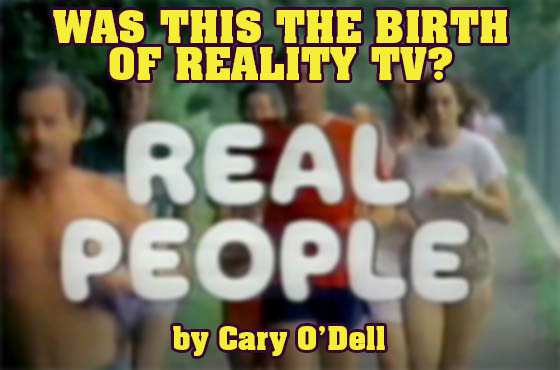
As with most small screen genres, it’s hard to say exactly when so-called “reality TV” began or even how we define it.
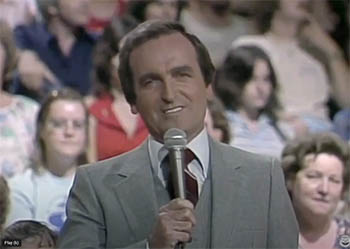 For many, “reality TV” starts with the Louds on PBS’ “American Family” series in 1973. For others, it’s MTV’s debut of “The Real World” in 1992, and, still, for others, it’s when CBS launched “Survivor” in 2000 (and incorporated a competitive element into the mix) and that show became a nationwide, cultural phenomenon with the ratings to prove it.
For many, “reality TV” starts with the Louds on PBS’ “American Family” series in 1973. For others, it’s MTV’s debut of “The Real World” in 1992, and, still, for others, it’s when CBS launched “Survivor” in 2000 (and incorporated a competitive element into the mix) and that show became a nationwide, cultural phenomenon with the ratings to prove it.
Technically, on supposes, “reality TV” is any on-air show that features real people and not actors playing parts based on scripts. So, by that definition, all of TV’s early talk shows, game show (like such classics as “What’s My Line?,” etc.) and shows like “Candid Camera” and the early incarnations of “The People’s Court” are all early examples of “reality” TV.
Still, others are of the opinion that the genre began in the late 1970s/early ‘80s with a small group of primetime video magazine-type programs that eschewed so-called “celebrities” and pointed their cameras, instead, at just “ordinary folks,” you know, like you and me.
For a time, this subset of programs became a big-time TV craze, threatening to forever change the TV landscape
It all began with “Real People” which debuted on NBC in April of 1979.
Pretty and poised Sarah Purcell (the show’s lone woman and the program’s sort of de facto leader) was one of the program’s hosts alongside Skip Stephenson, Byron Allen, John Barbour, Fred Willard (for a time), Bill Raferty (the show’s “roving reporter”) and PBS satirist Mark Russell. (Later hosts for the show included a pre-“Supermarket Sweep” David Ruprecht and kid star Peter Billingsley, straight off his staring role in the film “A Christmas Story.”)
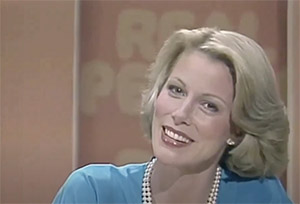 “Real People” cast its net wide in terms of the stories (most of them seven or so minutes long) that they covered. It was basically all aspects of unusual humans and their behavior—from people with unusual occupations to odd hobbies to those who lived in strange places to living in strange homes. They also covered eccentric artists, innovative scientists, and all manner of individuals who were out of the norm. For better or worse, they were among the first to highlight what would later become known as “extreme sports” and “People” was also the place that first introduced the world to that eccentric clown prince of pounds, Richard Simmons. While many of the stories/profiles were meant to be funny and others just baffling (in a head-scratching, “huh?” sort of way), some strived to be inspiring and some to be heartfelt.
“Real People” cast its net wide in terms of the stories (most of them seven or so minutes long) that they covered. It was basically all aspects of unusual humans and their behavior—from people with unusual occupations to odd hobbies to those who lived in strange places to living in strange homes. They also covered eccentric artists, innovative scientists, and all manner of individuals who were out of the norm. For better or worse, they were among the first to highlight what would later become known as “extreme sports” and “People” was also the place that first introduced the world to that eccentric clown prince of pounds, Richard Simmons. While many of the stories/profiles were meant to be funny and others just baffling (in a head-scratching, “huh?” sort of way), some strived to be inspiring and some to be heartfelt.
Really, “Real People” wasn’t that different than many other programs already on TV at that time. In fact, it was kind of like the venerable “60 Minutes” with is collection of pre-taped stories shown within a larger program. It was just that “People” was far more light-hearted and far more interested in the professional zucchini farmer than, say, the Secretary of State.
Whatever it was, it was hard to describe and it was a HIT, soon a fixture of the top 20 Nielsens.
As TV then often does, “Real People” inspired—quite quickly—some imitators. After the success of “aPeople,” the two other major networks (all we had at that time) quickly mobilized to create their own version of this show—or something like it.
Mainly what these primetime copies did was take various elements that “Real People” focused on and then tried to claim it as their own. If “Real People” was going to profile a professional smoke jumper, then what about a whole show that features nothing but high-danger feats? If “Real People” was going to look at the water-skiing dog, how about a whole show that herd together video stories about weird animal antics?
The first in this imitation game was ABC’s entry “That’s Incredible!,” it’s title always written with an explanation point. It debuted on March 3, 1980. It was hosted by a trio of pretty people John Davidson, Cathy Lee Crosby and ex-NFL star Fran Tarkenton.
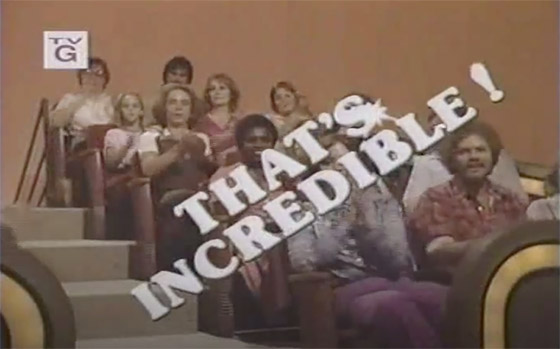 If “Real People” was about celebrating the common man/woman, “TI!” was more about celebrating the exotic and the dangerous. Of course, what was considered “incredible” (or “incredible!”) was open to interpretation. And, throughout its four early seasons, many of the things that the program showcased and labeled as “incredible” were just weird, even sadistic.
If “Real People” was about celebrating the common man/woman, “TI!” was more about celebrating the exotic and the dangerous. Of course, what was considered “incredible” (or “incredible!”) was open to interpretation. And, throughout its four early seasons, many of the things that the program showcased and labeled as “incredible” were just weird, even sadistic.
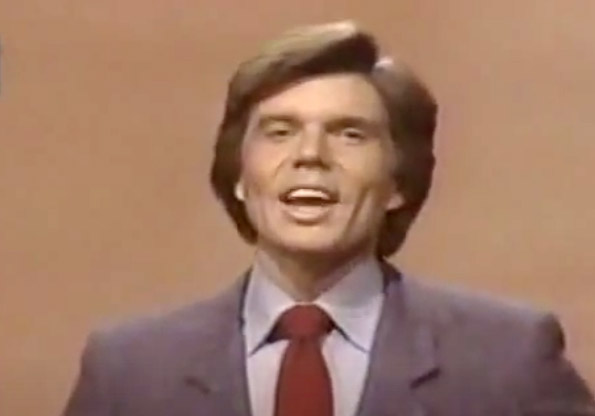 There were yogis who twisted themselves into tiny glass boxes; someone who caught bullets with their teeth; and quite infamously, a man who consumed a bicycle (yes, you read that right). There were also a lot of kids doing really precocious things. (In fact, in one episode, a young Tiger Woods appears as a golf prodigy.)
There were yogis who twisted themselves into tiny glass boxes; someone who caught bullets with their teeth; and quite infamously, a man who consumed a bicycle (yes, you read that right). There were also a lot of kids doing really precocious things. (In fact, in one episode, a young Tiger Woods appears as a golf prodigy.)
But if “incredible” was difficult to define it hasn’t aged very well either. In the very late 1990s/ early 2000s, CBS launched a cable channel called “Eye on People.” And, hungry for content, they began to re-air original “That Incredible!” episodes. But, what was deemed “incredible” in the 1980s seemed downright quaint when viewed at the turn of the century. The excitable story of “This couple had triples!” certainly paled compared to then-recent news stories about septuplet births. And the story of a woman who won the “$1 million dollar lottery!” just didn’t seem all that impressive anymore.
Despite the groans of many, however, not longer after it launched, “That’s Incredible” became a success and a trend was foot. Only a few months after “TI!”’s debut, ABC trotted out another similar program.
“Those Amazing Animals,” was an hour focusing on all types of non-humans and their antics, from cute to ferocious. Country-pop singer/songwriter Jim Stafford was one of the program’s three hosts. The other two were Priscilla Presley, then mainly known as Elvis’ pretty ex-wife, and, finally, the enduring character actor Burgess Meredith. Though there were a lot of warm and fuzzy moments with koalas and whatnot, the series also included its share of educational elements which included appearances by Joan Embry from the San Diego Zoo and the great oceanographer Jacques Cousteau.
Unfortunately, “Animals” had the misfortune of being programed by ABC up against the CBS juggernaut of “60 Minutes.” Hence, “Animals” went extinct after about one year on the air.
If “Animals” tried to court the kids as viewers, the final notable program of this era was much adult-oriented. “Speak Up America” was an odd show even among this odd genre. “Real People” often opened with “real people” in its audience just speaking their mind and “Speak Up, America” (officially a spin-off of “People”) seemed to want to built out on that. It too, like “People,” had taped stories but the focus was as much on what people had to say about these issues as about the people involved in the issues themselves. Got that? It was sort of like a Gallup poll but a lot less scientific. An example: the show’s roving reporter visited an infamous bordello…but to gauge people’s opinion on prostitution.
Former child evangelist Marjoe Gortner hosted alongside Jayne Kennedy and tall, skinny comic Rhonda Bates. Gortner, though no longer a preacher, still spoke with non-stop fire and fury!
Hence, “America” was an odd mix of things and it NEVER caught on. Debuting in August of 1980, the show ended in October of that same year.
 Meanwhile, only a little bit longer lived was CBS’s entry into the field, the Bob Barker hosted “That’s My Line.” “Line,” too took one aspect of what “Real People” did and just zeroed in on it. In this case, unusual occupations. That show ran for about a year. Then there was more sports-oriented “Games People Play” over NBC; it was hosted by Bryant Gumbel.
Meanwhile, only a little bit longer lived was CBS’s entry into the field, the Bob Barker hosted “That’s My Line.” “Line,” too took one aspect of what “Real People” did and just zeroed in on it. In this case, unusual occupations. That show ran for about a year. Then there was more sports-oriented “Games People Play” over NBC; it was hosted by Bryant Gumbel.
Yes, almost all of these shows had “Real People” somewhere in their DNA. Similarly, the other thing they had in common? The critics hated them all! Most across the nation belabored the unimaginative, lowest common denominator viewing that the programs seemed to cater to and labeled them as everything from “cheap” to “deplorable.”
In a New Jersey newspaper, at the time of its debut, a review of “TI!” said, “That’s not incredible, that’s stupid.” Later, a couple of critics started to refer to “Speak Up, America!” as “Shut Up, America!” and “Thow Up, America,” while other critics accused “Real People” of simply existing to media shaming its more naïve participants. Finally, many called into account the ethics of a show like “Incredible!” with its increasingly dangerous stunts.
Further, all, meanwhile, seemed to lambast this TV trend and the effect it could have on the overall broadcasting landscape, fearing that TV would soon be overwhelmed with cheaply-produced exploitation built on “normal” and “regular” people willing to subject themselves to almost anything for “fame.”
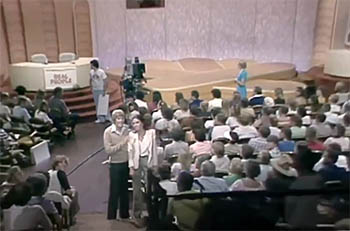 Well…they need not have worried. None of the shows just mentioned survived that long. “Real People” ended in 1984 the same year that the first incarnation of “Incredible!” came to a close.
Well…they need not have worried. None of the shows just mentioned survived that long. “Real People” ended in 1984 the same year that the first incarnation of “Incredible!” came to a close.
But…now, in the expanded cable and streaming world of TV, all of the elements that once made up these five or so show are still around.
What “Real People” did has become a little more snarky and been reborn on Comedy Central’s “Daily Show.” And a whole channel—Animal Planet—continues on with the “Amazing Animals” schtick. And even the once venerable Discovery Channel has become just weird—remember when the man allowed himself to be “eaten” by a snake?
Then there is today’s wide variety of “reality TV.” “Survivor,” “The Traitors,” “Big Brother,” “The Bachelor” and others now dominate cable and broadcast television because—like “Real People,” et.al.—they are literally cheap. These shows can be produced for a fraction of the cost of an hour-long drama or a 30-minute sitcom (what with its writers, sets, directors, actors). (It is, too, why so many game shows—from “Pyramid” to “Press Your Luck” to a glorified Plinko contest—are now all over primetime.)
In the end, it seems, yes, the critics were right. And so far ahead of the curve.